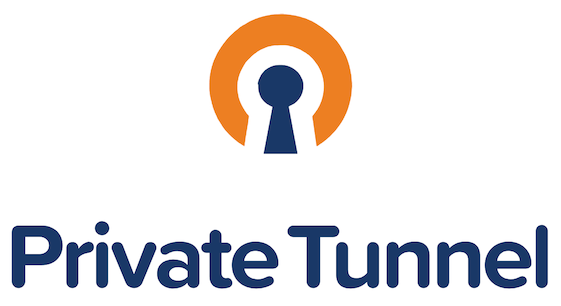7 Ways to Build an Adaptive Enterprise
Adaptive Enterprise

The business world evolves faster than you can think. New technologies replace older ones and pave the way for new processes. Enterprises that adapt to this change wins. Successful businesses use it to gain a competitive advantage over their competitors. In fact, 74% of business leaders think that adapting quickly to new changes is a key driver for success.
It is not just the technology or business dynamics that is changing but also the customer preferences and behaviors. Businesses that can tweak their strategies or create new ones to cater to these changes in customer behavior will end up winning.
Creating an adaptive enterprise can help you overcome all these challenges but it takes a complete shift in mindset, organization culture and business operations. To keep you motivated through this arduous journey, here is a stat. Businesses that succeed in transforming into an adaptive enterprise see a 25% increase in their revenue growth as compared to enterprises that don’t adapt to change that effectively.
In this article, you will learn about seven ways to build an adaptive enterprise.
7 Ways to Build an Adaptive Enterprise
Here are seven ways to build an adaptive enterprise.
1. Embrace Digital Transformation as a Continuous Journey
The first thing you need to do is to get your mindset straight regarding digital transformation. Instead of treating digital transformation as a one time project, you should think of it as a continuous process. This will put your business in a much better place when it comes to responding to ever changing customer demands.
Small steps like ditching legacy systems and embracing dedicated hosting server to developing a culture of continuous improvement and learning can go a long way. Keep evaluating the digital maturity level of your business and take steps to improve it. All these steps will take your organziation one step closer to becoming an agile enterprise that adapts to new changes more efficiently.
2. Implement Agile Methodologies Across the Organization
Agile methodology is commonly used in software development and project management but can also be applied in different industries. It offers numerous advantages such as improving collaboration, giving businesses flexibility, incorporating user feedback to improve the final product and most importantly, ability to respond to changes in customer demands swiftly.
Agile methodology makes your processes more flexible, enabling enterprises to make improvements on every iteration. This leads to a more refined final product which is much closer to customer needs. Moreover, agile methodology lets you test new ideas, experiment with new things and adapt to new changes faster. The days for rigid processes and workflows are long gone because they can slow down your ability to make decisions, leaving you behind in the race against your competitors.
3. Leverage Data-Driven Decision Making
Gone are the days when business leaders tended to make decisions based on their gut feeling. Today, data has taken its place. By combining advanced technologies such as machine learning and predictive analytics, businesses can identify useful patterns, actionable insights and even predict future demand for their products. Not only that, you can also anticipate market trends before they even arise and adjust your strategy accordingly to take full advantage of it.
To make the most of data at your disposal, you need to invest in analytics tools and work on improving the data literacy of your team. This will help you unlock their true potential and enable them to leverage data to make the right decision at the right time.
4. Create a Culture of Innovation and Experimentation
Encourage your employees to experiment with new ideas because that is what paves the way for innovation. Eliminate the fear of failure in your employees and let them challenge the status quo. This will sow the seeds of an organization culture that breeds innovation. Once you have the culture of innovation, innovation happens in auto-pilot. It is like creating a system and letting it weave its magic.
5. Develop Strong Ecosystems and Partnerships
No enterprise can thrive in isolation. To build resilience and adaptability, organizations should form strong partnerships with other businesses, technology vendors you Budget Vps server from and industry experts. These networks provide access to new technologies, expertise and markets. This allows enterprises to scale and adapt more rapidly. Develop strategic alliances and actively participate in industry consortia to stay ahead of market developments and gain access to innovative solutions.
6. Empower Employees Through Upskilling and Flexibility
The flexibility you get from agile methodology should also trickle down to your employees. Encourage your employees to learn new skills. You can do that by investing in their education or organizing training that helps them hone their skills.
This will help them do their jobs more effectively. These training programs can broaden their horizons and allow them to look at things from different perspectives. Best of all, it will improve employee satisfaction, boost their morale and increase their productivity.
7. Prioritize Cybersecurity as a Core Competency
With more and more businesses relying heavily on digital tools and platforms, they are at a higher risk of being targeted by malicious threat actors. Data breaches and cybersecurity attacks are rampant, which forces businesses to prioritize cybersecurity.
Cybersecurity should no longer be an afterthought. In fact, it should be at the top of the board agenda and discussed in board meetings. Make cybersecurity a shared responsibility and train your employees to detect threats. This will reduce the burden off the shoulders of your understaffed and overworked cybersecurity teams but also allow other employees to play their part in securing your organization.
Conclusion
Creating an adaptive enterprise is about responding to changes quickly and adopting agile practices can help you with that. Developing a conclusive organization culture for innovation and experimentation can help you achieve that goal. Forming strategic partnerships, empowering your employees and providing the room to experiment and test new ideas can make your organziation adaptive.
How do you create an adaptive enterprise? Share your process with us in the comments section below.
What's Your Reaction?
























